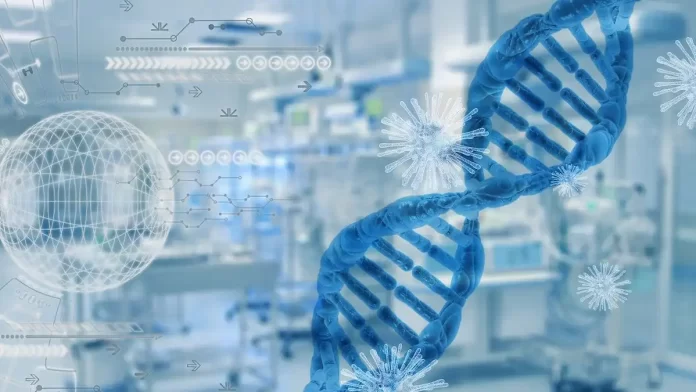Advancements in biotechnology have revolutionized the way we understand and manipulate genetic information.
One such groundbreaking discovery is RNA interference (RNAi) technology, a powerful mechanism that allows researchers to selectively silence genes and modulate gene expression.
First discovered in the late 1990s, RNAi has opened up new avenues for medical research, drug development, and gene therapy.
In this article, we will delve into the science behind RNAi, its applications, and the potential it holds for transforming the future of medicine and biotechnology.
What is RNA Interference?
RNA interference, commonly abbreviated as RNAi, is a natural cellular process that regulates gene expression post-transcriptionally.
It involves the use of small RNA molecules to silence specific genes or messenger RNA (mRNA) transcripts, effectively blocking the production of specific proteins.
Simply put, it is like a tiny superhero inside our cells. It helps our bodies follow instructions properly by controlling which genes should make certain proteins. Think of genes as recipes, and proteins as the yummy dishes they create.
RNAi makes sure only the right recipes are used at the right times. It does this by using small molecules that can stop specific recipes from working.
Just like a traffic cop directing cars, RNAi guides our cells and keeps everything running smoothly, protecting us from getting sick and helping us grow strong!
Scientists are super excited about this tiny superhero because it can also help find new ways to treat diseases and make our crops healthier.
The two main types of small RNA molecules involved in RNAi are microRNAs (miRNAs) and small interfering RNAs (siRNAs).
The Mechanism of RNAi
The RNAi process begins with the transcription of DNA into RNA. In the case of miRNAs, specific genes produce long primary miRNA transcripts, which are then processed into shorter precursor miRNAs by an enzyme called Dicer.
These precursor miRNAs are further cleaved to form mature miRNAs, which are incorporated into a protein complex known as the RNA-induced silencing complex (RISC).
On the other hand, siRNAs can be exogenously introduced into cells or generated endogenously through the cleavage of double-stranded RNA by the enzyme Dicer. Like miRNAs, siRNAs are also loaded into the RISC complex.
Once the miRNA or siRNA is loaded into the RISC complex, it serves as a guide for the complex to bind to the complementary target mRNA.
The RISC complex either directly cleaves the target mRNA or inhibits its translation, leading to the silencing of the corresponding gene. This process effectively regulates gene expression, preventing the production of specific proteins.
The Role of RNAi in Gene Regulation
RNAi plays a pivotal role in regulating various cellular processes, including development, differentiation, and immune response. It acts as a safeguard against the aberrant expression of genes, ensuring the proper functioning of cells and tissues.
Dysregulation of RNAi has been linked to numerous diseases, including cancer and neurodegenerative disorders, highlighting its importance in maintaining cellular homeostasis.
Applications of RNAi Technology
- Functional Genomics: RNAi has become an indispensable tool in studying gene function. By selectively silencing specific genes, researchers can observe the effects of gene knockdown on cell behavior, identifying the roles of genes in different cellular processes.
- Drug Target Identification: RNAi enables researchers to identify potential drug targets by selectively silencing specific genes associated with diseases. This approach has accelerated drug discovery and development processes.
- Therapeutic Applications: RNAi-based therapies hold immense potential for treating various diseases, including cancer, viral infections, and genetic disorders. By targeting disease-causing genes, RNAi therapeutics offer a precise and personalized approach to medicine.
- Agriculture: RNAi technology has been explored for crop improvement and pest control. By targeting specific genes in pests or pathogens, it is possible to develop environmentally friendly and sustainable solutions for crop protection.
- Viral Defense: Some organisms, including plants and insects, utilize RNAi as a defense mechanism against viral infections. Understanding these natural processes can aid in developing antiviral strategies for human health.
RNAi Technology Challenges and Limitations
While RNAi technology shows great promise, it also faces certain challenges and limitations:
- Off-Target Effects: Sometimes, RNAi molecules can unintentionally silence genes with partially complementary sequences, leading to off-target effects. This can potentially result in unintended consequences and must be carefully considered during therapeutic development.
- Delivery Systems: Delivering RNAi molecules to specific tissues or cells remains a significant challenge. The molecules need to overcome various barriers to reach their intended targets effectively.
- Duration of Effect: The effects of RNAi molecules are often transient, requiring repeated administration for sustained therapeutic benefits. Developing strategies for long-term gene silencing remains an active area of research.
- Immunogenicity: In some cases, RNAi molecules may trigger an immune response, limiting their efficacy. Developing RNAi molecules that do not induce immunogenicity is a crucial consideration in therapeutic development.
Conclusion
RNA interference (RNAi) technology has transformed the way we approach gene regulation, offering an unprecedented level of precision in manipulating genetic information.
From fundamental research to therapeutic applications, RNAi holds great promise in shaping the future of medicine and biotechnology.
As scientists continue to unravel the complexities of RNAi and overcome its challenges, we can look forward to groundbreaking discoveries and innovative treatments for a wide range of diseases
